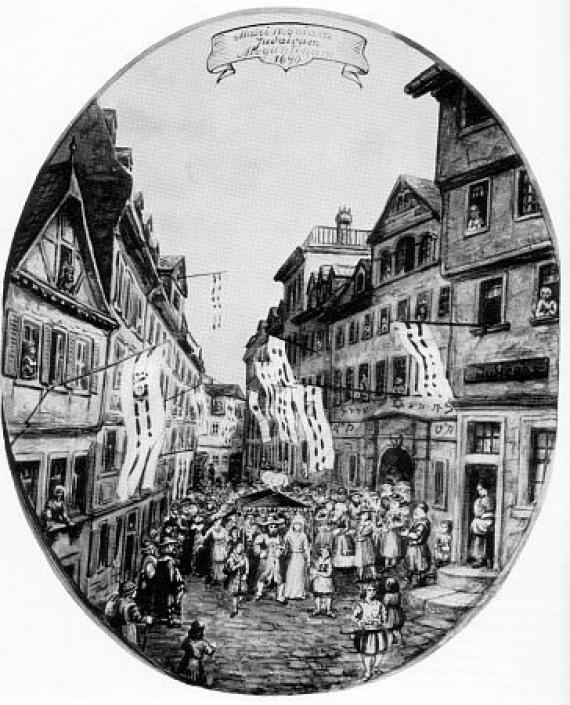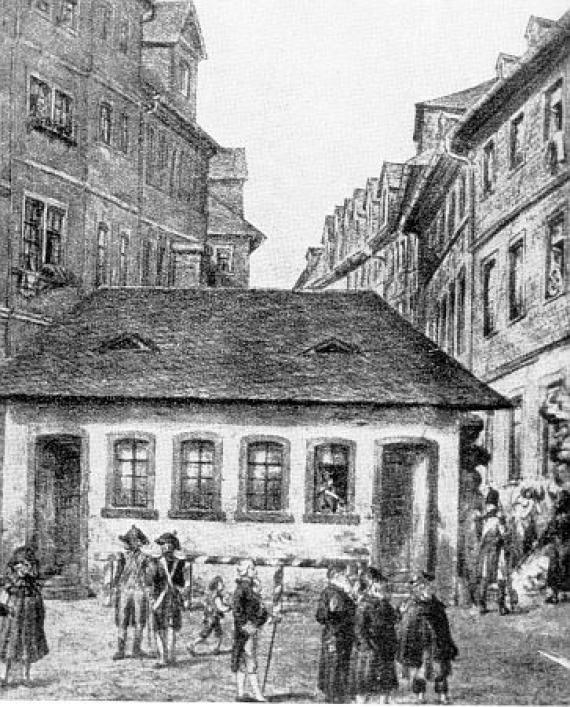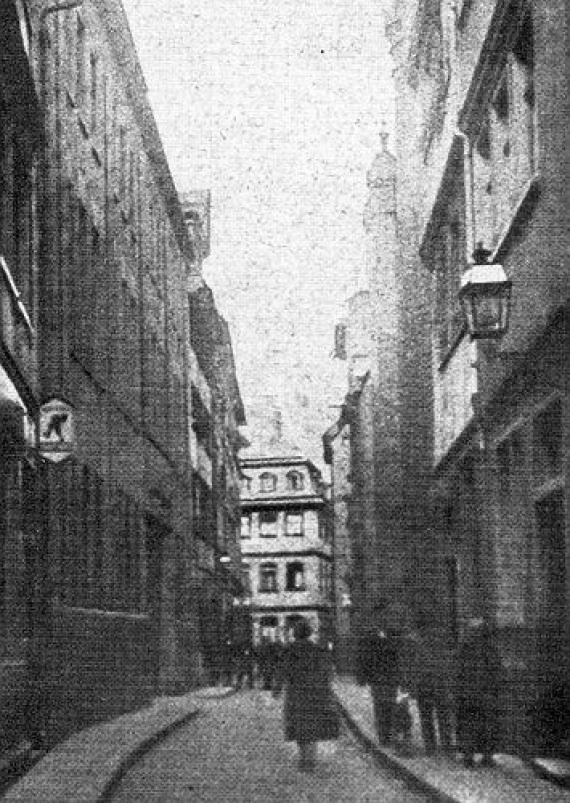In Mainz there was a significant Jewish community initially in the Middle Ages, which was established in the 10th century. Possibly, there was already a Jewish settlement in the city in Roman times . With the beginning of the Crusades 1096 began the period of terrible persecutions: Several times a large part of the Mainz Jewish community was cruelly massacred. The Jewish community administration was in the hands of the Judenrat, at the head of which stood a Judenbischof appointed by the archbishop. After the persecution in 1349, Jews in Mainz are mentioned again for the first time in 1356 They lived from trade in money, wine, fruit and goods, also Jewish doctors and community servants are mentioned. In the 15th century there were several expulsions.
After influxes of individual Jewish families 1583 a new Jewish community could be formed. In 1662 a decree by Elector Johann Philipp von Schönborn severely restricted the economic opportunities of the Jewish inhabitants. They were no longer allowed to operate open stores. They were only allowed to trade in certain goods. Their residential area remained restricted to the Jewish alley, which was closed off from both sides. In the 18th century, the number of Jewish inhabitants increased to about 550 people; in the ghetto with its narrow houses there was a crowded atmosphere. As a fruit of the Enlightenment period and the French Revolution, the gates of the Jewish ghetto fell on September 12 1792 Since the 2nd half of the 19th century, Jewish inhabitants had a great importance in the life of the city, so as entrepreneurs and tradesmen, as doctors, lawyers and journalists. Numerous Jewish associations contributed to the diversity of Mainz cultural life.
After 1933, as in the entire German Reich, the increasing disenfranchisement of the Jewish population by National Socialist policies began in Mainz. On Pogrom Night in November 1938, there were numerous attacks against the Jewish population, their homes and businesses. In March and September 1942, a large part of the remaining Jewish population was deported to extermination camps in the East or to the Theresienstadt ghetto. The last deportation on February 10, 1943, completely extinguished Jewish community life in Mainz. Only a few Jews in so-called "privileged mixed marriages" lived to see the end of the war in Mainz. In total, about 1,300 to 1,400 Mainz Jews were murdered.
On October 17, 1945, a new congregation could be founded by a few survivors of the concentration camps. Due to the influx of Jewish emigrants from the CIS countries, the number of Jewish community members increased to about 1,000 community members by 2005.

Arnsberg, Paul, Die jüdischen Gemeinden in Hessen, Bd. 2, Frankfurt/Main 1971.

Arnsberg, Paul, Die jüdischen Gemeinden in Hessen, Bd. 2, Frankfurt/Main 1971.

Arnsberg, Paul, Die jüdischen Gemeinden in Hessen, Bd. 2, Frankfurt/Main 1971.
Add new comment